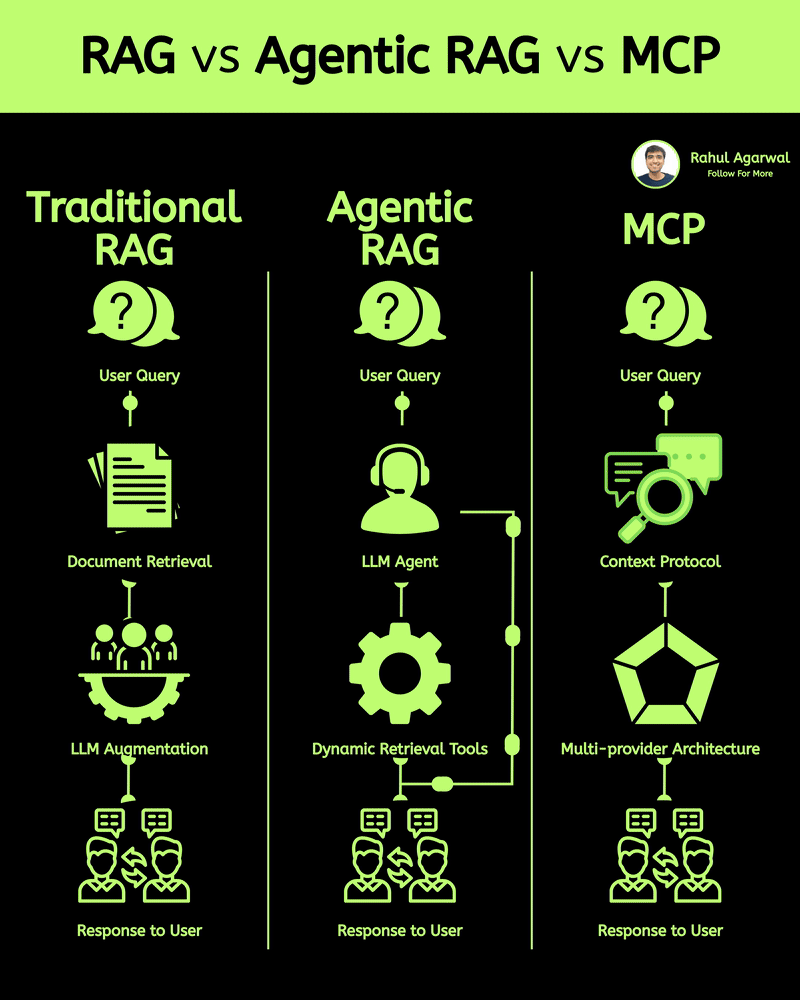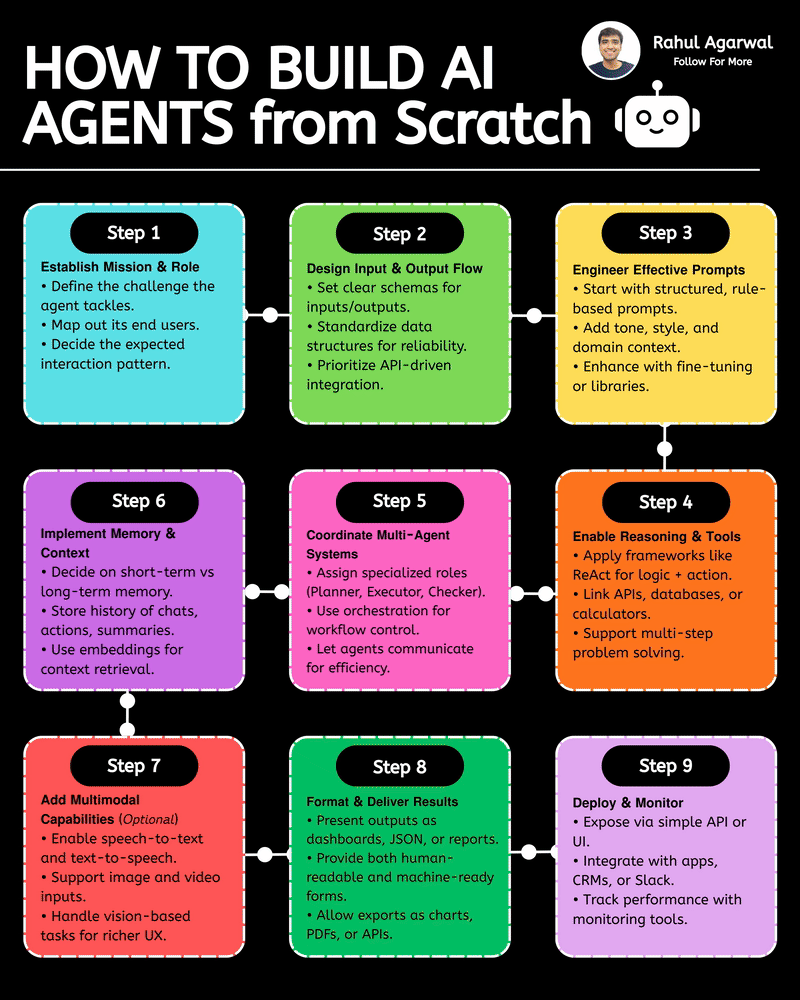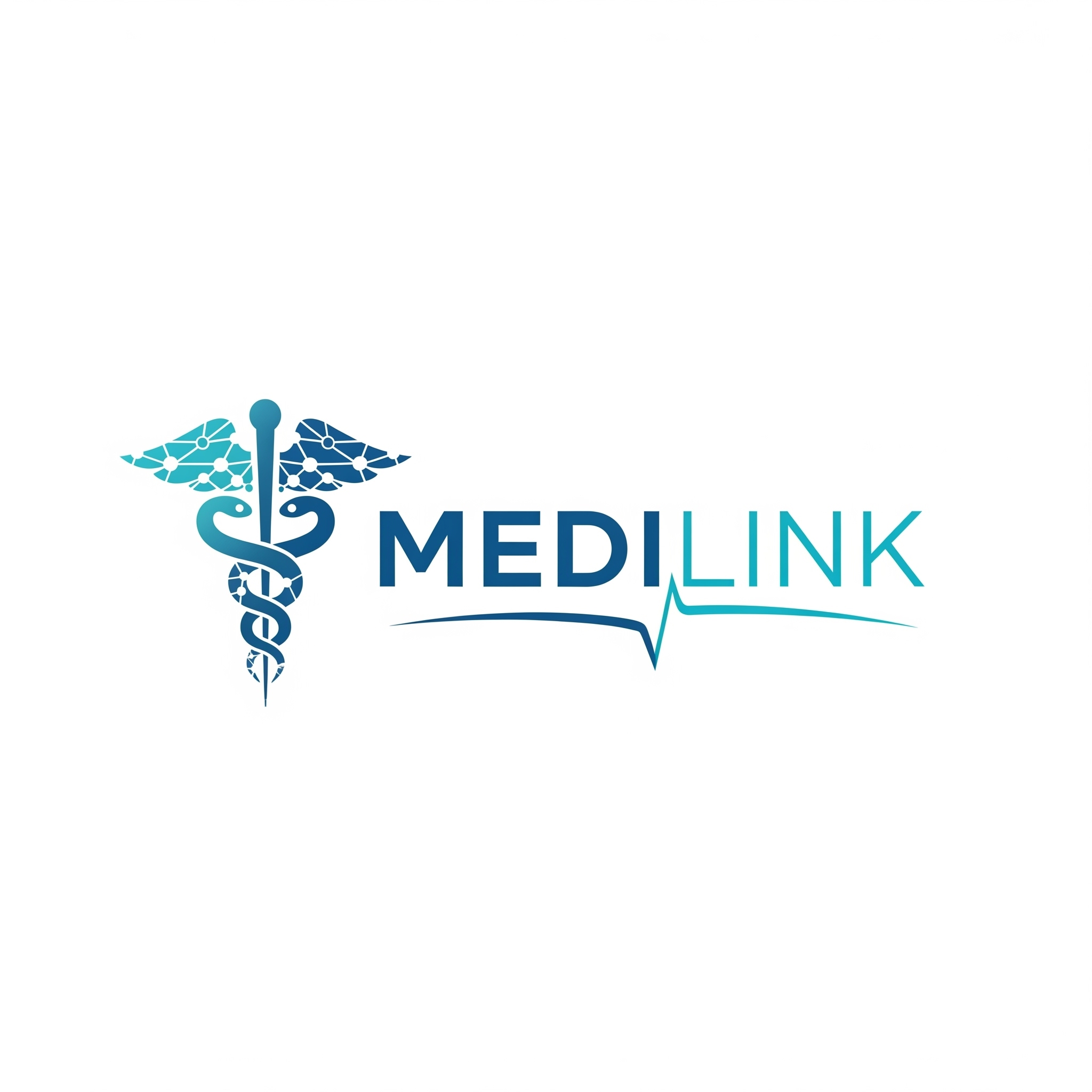Back
Rahul Agarwal
Founder | Agentic AI... • 11h
Steps to building AI systems with LLM's. I've given a simple detailed explanation below. 𝗦𝘁𝗲𝗽 1 – 𝗟𝗟𝗠𝘀 (𝗟𝗮𝗿𝗴𝗲 𝗟𝗮𝗻𝗴𝘂𝗮𝗴𝗲 𝗠𝗼𝗱𝗲𝗹𝘀) • These are the 𝗯𝗿𝗮𝗶𝗻𝘀 of the system. • Examples: GPT (OpenAI), Gemini, Claude etc. • They generate answers, understand queries, and perform reasoning. 𝗦𝘁𝗲𝗽 2 – 𝗙𝗿𝗮𝗺𝗲𝘄𝗼𝗿𝗸𝘀 • Frameworks help you 𝗰𝗼𝗻𝗻𝗲𝗰𝘁 𝘁𝗵𝗲 𝗟𝗟𝗠 𝘄𝗶𝘁𝗵 𝗱𝗮𝘁𝗮, 𝘁𝗼𝗼𝗹𝘀, 𝗮𝗻𝗱 𝗮𝗽𝗽𝘀. • Examples: LangChain, Llama Index, Haystack, Txtai. • They act like a 𝘁𝗼𝗼𝗹𝗸𝗶𝘁 so you don’t have to build everything from scratch. 𝗦𝘁𝗲𝗽 3 – 𝗩𝗲𝗰𝘁𝗼𝗿 𝗗𝗮𝘁𝗮𝗯𝗮𝘀𝗲𝘀 • LLMs can’t remember everything. They need a 𝗺𝗲𝗺𝗼𝗿𝘆 𝘀𝘆𝘀𝘁𝗲𝗺. • Vector databases store “embeddings” (numerical representations of text). • Examples: Pinecone, Weaviate, Chroma, Milvus, Qdrant. • They make searching fast and relevant (like Google search but for your private data). 𝗦𝘁𝗲𝗽 4 – 𝗗𝗮𝘁𝗮 𝗘𝘅𝘁𝗿𝗮𝗰𝘁𝗶𝗼𝗻 • Your AI needs real-world 𝗱𝗮𝘁𝗮 𝗶𝗻𝗽𝘂𝘁𝘀. • Tools like Crawl4AI, FireCrawl, ScrapeGraphAI, Docling, LlamaParse help: - Scrape websites - Extract PDFs, docs, or tables - Clean and structure messy data 𝗦𝘁𝗲𝗽 5 – 𝗢𝗽𝗲𝗻 𝗟𝗟𝗠𝘀 𝗔𝗰𝗰𝗲𝘀𝘀 • Instead of calling proprietary APIs, you can 𝗿𝘂𝗻 𝗟𝗟𝗠𝘀 𝗹𝗼𝗰𝗮𝗹𝗹𝘆 or via open-source providers. • Examples: Hugging Face, Ollama etc. 𝗦𝘁𝗲𝗽 6 – 𝗧𝗲𝘅𝘁 𝗘𝗺𝗯𝗲𝗱𝗱𝗶𝗻𝗴𝘀 • To store text in databases, you must first 𝗰𝗼𝗻𝘃𝗲𝗿𝘁 𝗶𝘁 𝗶𝗻𝘁𝗼 𝗻𝘂𝗺𝗯𝗲𝗿𝘀 (𝘃𝗲𝗰𝘁𝗼𝗿𝘀). • Tools like OpenAI Embeddings, SBERT, Voyage AI etc handle this. • Embeddings allow semantic search (finding meaning, not just keywords). 𝗦𝘁𝗲𝗽 7 – 𝗘𝘃𝗮𝗹𝘂𝗮𝘁𝗶𝗼𝗻 • Once built, you must 𝘁𝗲𝘀𝘁 𝗮𝗻𝗱 𝗶𝗺𝗽𝗿𝗼𝘃𝗲 your system. • Tools: Giskard, Ragas, Trulens. • They measure: - Accuracy - Hallucinations (wrong answers) - Relevance of results ✅ 𝗙𝗶𝗻𝗮𝗹 𝗙𝗹𝗼𝘄 𝗶𝗻 𝗦𝗶𝗺𝗽𝗹𝗲 𝗪𝗼𝗿𝗱𝘀: 1. Choose a model (LLM). 2. Connect it with a framework. 3. Collect data and extract it properly. 4. Turn data into embeddings and store them in a vector DB. 5. Give the LLM access to search that DB. 6. Use open access tools if you want local/cheap models. 7. Continuously evaluate and refine. You can apply this framework in your company to design and deploy powerful AI solutions for your business. ✅ Repost for others in your network who can benefit from this.

More like this
Recommendations from Medial
Chetan Bhosale
Software Engineer | ... • 11m
💡 5 Things You Need to Master for learn for integrating AI into your project 1️⃣ Retrieval-Augmented Generation (RAG): Combine search with AI for precise and context-aware outputs. 2️⃣ Vector Databases: Learn how to store and query embeddings for e
See MoreHimanshu gurjar
Hey I am on Medial • 4m
I'm developing a smart AI-powered meal planner mobile app that helps users create personalized meal plans based on their health goals, dietary preferences, regional cuisine, and lifestyle. The app suggests meals for breakfast, lunch, snacks, and dinn
See MoreSheikh Ayan
Founder of VistaSec:... • 2m
📊 Top 5 Open-Source Tools Powering Big Data Innovation Big Data is transforming decision-making, and open-source tools are leading the charge. Here are the must-know platforms: 1️⃣ Apache Hadoop 🗂️ – The backbone for distributed storage & process
See MoreAnonymous
Hey I am on Medial • 1y
I want to build a saas product for data analysis for the manager and admins of the company... The workflow will be like that 1. Register to the platform 2. Connect their db 3. List of charts will be shown 4. People will select the chart 5. Now they h
See MoreDownload the medial app to read full posts, comements and news.




































